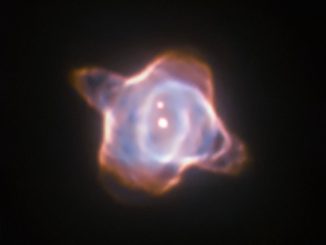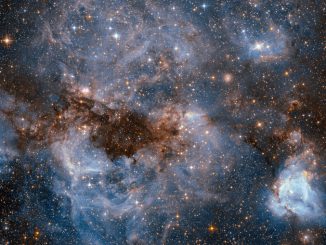
WFPC2


Hubble peers into the maelstrom
This NASA/ESA Hubble Space Telescope image shows a stellar nursery known as N159 — a maelstrom of glowing gas and dark dust within one of the Milky Way’s satellite galaxies, the Large Magellanic Cloud (LMC). N159 is located over 160,000 light-years away. It resides just south of the Tarantula Nebula, another massive star-forming complex within the LMC.

Best image of Alpha Centauri A and B
The NASA/ESA Hubble Space Telescope has given us this stunning view of the closest bright stars Alpha Centauri A (on the left) and Alpha Centauri B (on the right), at a distance of 4.3 light-years from the Earth. The Alpha Centauri group is completed by a faint red dwarf, Proxima Centauri (not shown), recently revealed to possess an Earth-like planet orbiting in its habitable zone.

Dying star offers glimpse of our Sun’s future
This planetary nebula is known as Kohoutek 4-55 (or K 4-55). It is one of a series of planetary nebulae that were named after their discoverer, Czech astronomer Luboš Kohoutek. Such a nebula is formed from material in the outer layers of a red giant star that are expelled into interstellar space when the star is in the late stages of its life.

